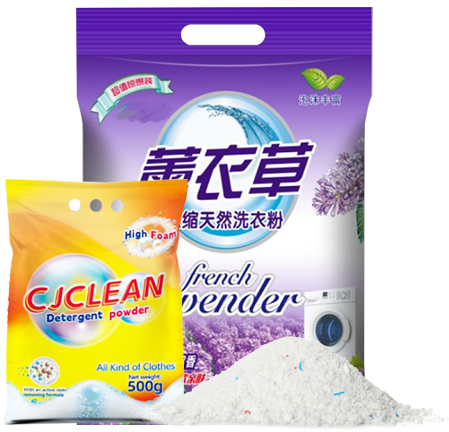Table of Contents
Introduction

In an increasingly health-conscious world, the quest for effective hygiene solutions has many consumers scrutinizing product labels with unprecedented care. Amid the sea of options, anti bacterial hand soap have emerged as a must-have in homes and public spaces, promising extra anti microbial protection. However, a growing trend suggests that “fewer ingredients” may equate to “safer” or even “better” when it comes to personal care products. This raises a key question: When it comes to hygiene, is less really the ultimate in sophistication? Or does a pared-down formula compromise the efficacy we seek?
In this blog, we’ll take a look at anti bacterial hand soap, explore what “fewer ingredients” means, which ingredients to avoid, and the natural vs. synthetic debate. Our goal is to help you make effective and safe hand hygiene decisions.
What Do “Fewer Ingredients” Really Mean?
The marketing phrase “fewer ingredients” or “clean label” has gained significant traction, appealing to consumers seeking simplicity and transparency. However, its interpretation can be quite varied and sometimes misleading.
Decoding the “Fewer Ingredients” Claim
When a product, including anti bacterial hand soap, boasts “fewer ingredients,” it typically implies:
- Shorter Ingredient List: The most obvious interpretation. This often means the manufacturer has avoided unnecessary fillers, dyes, strong fragrances, or preservatives that might be deemed irritating or controversial.
- Absence of Specific Controversial Chemicals: Brands often highlight the exclusion of ingredients like parabens, phthalates, sulfates, or certain synthetic fragrances.
- Focus on Core Functionality: The product might prioritize the active cleaning and antibacterial agents, along with essential carriers and stabilizers, without adding components solely for aesthetics or excessive lather.
- Marketing Strategy: While sometimes driven by genuine formulation principles, it can also be a strategic marketing move to appeal to the “clean beauty” or “natural” market segments.
It’s important to note that “fewer ingredients” doesn’t automatically mean “natural” or “chemical-free.” Water, for instance, is an ingredient, and many essential functional components in anti bacterial hand soap are still chemically synthesized, even if they are well-researched and safe. The real value lies not just in the quantity, but the quality and purpose of each ingredient.
Which Ingredients Should You Avoid in Hand Soap?

While the desire for an effective anti bacterial hand soap is strong, certain ingredients have raised concerns among consumers and health experts alike. Knowing what to look for on an ingredient label can empower you to make more informed choices.
Common Ingredients of Concern in Hand Soap
| Ingredient Category | Examples & Purpose in Soap | Potential Concerns & Why Avoid |
| Antibacterial Agents | Triclosan, Triclocarban (historically used to kill bacteria) | Triclosan: Linked to hormone disruption, antibiotic resistance in bacteria, environmental contamination. Triclocarban: Similar concerns regarding endocrine disruption and environmental impact. Now largely banned in consumer wash products by FDA. |
| Parabens | Methylparaben, Propylparaben, Butylparaben (preservatives) | Can mimic estrogen, potential endocrine disruptors. Found in breast cancer tissues. |
| Phthalates | Often hidden in “fragrance” (plasticizers, solvent for fragrance) | Endocrine disruptors, linked to reproductive issues and developmental problems. |
| Sulfates | Sodium Lauryl Sulfate (SLS), Sodium Laureth Sulfate (SLES) (foaming agents, cleansers) | Can be skin irritants, strip natural oils, leading to dryness and irritation, especially for sensitive skin. SLES can be contaminated with 1,4-Dioxane (a probable carcinogen). |
| Synthetic Fragrances | “Fragrance (parfum)” (complex blend of chemicals for scent) | Common allergens, can trigger headaches, asthma, skin irritation. Often proprietary, so individual chemicals are not disclosed. |
| Synthetic Dyes/Colors | FD&C Yellow 5, D&C Red 33 (for visual appeal) | Potential allergens, some linked to hyperactivity in children. Purely cosmetic, add no functional benefit. |
| Formaldehyde-Releasing Preservatives | DMDM Hydantoin, Imidazolidinyl Urea, Diazolidinyl Urea (prevent microbial growth) | Can release small amounts of formaldehyde, a known human carcinogen and skin allergen. |
| PEGs (Polyethylene Glycols) | PEG-40 Hydrogenated Castor Oil (emulsifiers, humectants) | Can be contaminated with 1,4-Dioxane. Can act as penetration enhancers, potentially helping other undesirable chemicals penetrate the skin. |
Avoiding these ingredients doesn’t necessarily mean the product is less effective at cleaning. Many reputable manufacturers now formulate effective anti bacterial hand soap products using safer alternatives that achieve the same desired results without these controversial components.
Are Natural Ingredients Always Safer?
The allure of “natural” ingredients in personal care products, including anti bacterial hand soap, is strong. The perception is that anything derived from nature must be inherently safer or healthier than synthetic alternatives. However, this isn’t always the case.
The Nuance of “Natural”
- Allergens and Irritants: Many natural ingredients, such as essential oils (e.g., lavender, tea tree, citrus oils), plant extracts, and even common food-derived ingredients (e.g., wheat, nuts), can be potent allergens or skin irritants for sensitive individuals. A “natural” fragrance, for instance, can be just as irritating as a synthetic one, if not more so for some people.
- Potency and Concentration: The concentration of a natural ingredient matters. While a diluted natural extract might be benign, a highly concentrated essential oil can cause significant skin reactions.
- Contamination and Purity: “Natural” doesn’t guarantee purity. Natural ingredients can be contaminated with pesticides, heavy metals, or microbes if not sourced and processed carefully. Synthetic ingredients, when manufactured under strict controls, can often offer a higher level of purity and consistency.
- Stability and Preservation: Natural ingredients can be less stable and more prone to microbial growth, requiring effective (though hopefully safe) preservation systems. Without proper preservation, a “natural” anti bacterial hand soap could become a breeding ground for bacteria itself.
- Scientific Backing: While some natural ingredients have traditional or emerging scientific support for certain properties, synthetic alternatives often have a longer history of rigorous scientific testing for safety and efficacy in a controlled cosmetic context.
Balancing Natural and Synthetic
The ideal anti bacterial hand soap often strikes a balance. It leverages safe and effective synthetic active ingredients (if applicable) for their proven germ-fighting capabilities, while potentially incorporating select, well-tolerated natural ingredients for beneficial properties like moisturizing or mild scent, ensuring they are free from known allergens or contaminants. The focus should be on safety and efficacy, regardless of whether an ingredient is natural or synthetic.
How to Read a Hand Soap Ingredients Label


Navigating the ingredient list on an anti bacterial hand soap can feel like deciphering a complex code. However, understanding a few key principles can empower you to make informed decisions.
1. Ingredients Are Listed by Quantity
By law, ingredients are listed in descending order by weight or concentration. This means the first few ingredients make up the bulk of the product. Typically, water is the primary ingredient in liquid hand soaps. If you see a concerning ingredient very high on the list, it means it’s present in a significant amount. Conversely, ingredients listed at the very end are present in very small concentrations (usually less than 1%).
2. Recognize Common Ingredient Categories
Familiarize yourself with the general categories of ingredients and their functions in an anti bacterial hand soap:
- Water (Aqua): Solvent, base.
- Surfactants/Cleansers: (e.g., Sodium Laureth Sulfate, Cocamidopropyl Betaine, Decyl Glucoside) These create lather and clean.
- Antibacterial Agents: (e.g., Benzalkonium Chloride) These are the active germ-fighting components. Note that triclosan and triclocarban are largely banned in consumer wash products in the US.
- Moisturizers/Emollients: (e.g., Glycerin, Aloe Barbadensis Leaf Juice, Shea Butter) Prevent skin dryness.
- Preservatives: (e.g., Phenoxyethanol, Sodium Benzoate, Potassium Sorbate) Prevent microbial growth and extend shelf life.
- pH Adjusters: (e.g., Citric Acid, Sodium Hydroxide) Maintain the soap’s pH balance for skin compatibility.
- Fragrance/Perfume (Parfum): Adds scent. Can be natural or synthetic.
- Dyes/Colorants: (e.g., CI numbers) Add color.
3. Look for Red Flags
Keep an eye out for the ingredients discussed in the “Which Ingredients Should You Avoid” section (e.g., parabens, phthalates, triclosan, strong sulfates if you have sensitive skin). If you see “fragrance (parfum)” and are sensitive to scents, this could be a red flag.
4. Understand Certifications and Claims
Many brands use certifications (e.g., USDA Organic, Leaping Bunny for cruelty-free, EWG Verified) or claims (“hypoallergenic,” “fragrance-free,” “paraben-free”) to highlight their product’s attributes. While these can be helpful, always cross-reference them with the actual ingredient list and understand what each claim truly means. “Hypoallergenic,” for instance, simply means it’s less likely to cause an allergic reaction, not that it’s impossible.
5. Research Unfamiliar Ingredients
If you come across an ingredient you don’t recognize and want to know more about it, use online resources like the Environmental Working Group’s Skin Deep database or reputable cosmetic ingredient dictionaries. This proactive approach ensures you’re fully aware of what’s in your anti bacterial hand soap.
By taking a few moments to understand the label, you gain control over the products you bring into your home and apply to your skin.
Can a Soap Be Too “Mild” to Be Effective?
The push for fewer and gentler ingredients in anti bacterial hand soap raises an important question: can a soap become so mild that it loses its effectiveness in cleaning and germ removal? The answer lies in understanding the primary mechanisms of hand hygiene.
The Dual Action of Hand Washing
Hand washing, whether with regular or anti bacterial hand soap, relies on two key principles to remove germs:
- Mechanical Action: This is the physical rubbing and rinsing with water. The friction of rubbing your hands together creates a force that dislodges dirt, grime, and microbes from the skin’s surface. Water then rinses them away. This mechanical action is arguably the most critical component of effective hand hygiene.
- Surfactant Action: Soaps contain surfactants (surface-active agents). These molecules have both water-attracting and oil-attracting parts. They work by:
- Lowering the surface tension of water, allowing it to spread more easily.
- Emulsifying oils and fats (where many germs reside), lifting them off the skin.
- Creating lather, which helps distribute the soap and contributes to the feeling of cleanliness.
“Mild” vs. “Ineffective”
A soap can be mild in terms of its ingredient profile (e.g., fewer harsh sulfates, synthetic fragrances, or preservatives) without sacrificing its effectiveness as a cleanser. As long as it contains effective surfactants and encourages adequate lathering for good mechanical action, it can remove germs just as well as a more “harsh” soap.
- Sufficient Surfactants: The key is having enough functional surfactants to break down grease and lift dirt. A “mild” soap still contains these, just potentially gentler versions (e.g., cocamidopropyl betaine, decyl glucoside) rather than stronger ones like SLS.
- Proper Technique: Regardless of the soap, proper handwashing technique (wetting, lathering for 20 seconds, rinsing thoroughly) is paramount. A mild soap used correctly will always be more effective than a strong soap used incorrectly.
Therefore, a anti bacterial hand soap with “fewer ingredients” or a milder formulation isn’t necessarily less effective. In fact, by being gentler on the skin, it might encourage more frequent and thorough washing, which ultimately leads to better hygiene outcomes. The true germ-fighting power in a non-antibacterial soap comes from the combination of mechanical action and surfactant activity, not from harshness.
Antibacterial Soap vs. Regular Soap: What’s the Difference?
The fundamental distinction between anti bacterial hand soap and regular soap lies in the presence of specific active pharmaceutical ingredients (APIs) designed to kill or inhibit bacteria.
Regular Soap (Non-Antibacterial)
- Mechanism: Primarily relies on the mechanical action of washing and the surfactant properties of the soap. It lifts dirt, oil, and microbes (including bacteria and viruses) from the skin’s surface, which are then rinsed away with water. It does not actively kill bacteria on the skin.
- Ingredients: Contains water, surfactants (cleansing agents), moisturizers, and often fragrances and dyes.
- Effectiveness: Highly effective at removing germs, including bacteria and viruses, when used with proper handwashing technique. The CDC (Centers for Disease Control and Prevention) and FDA (Food and Drug Administration) state that for general consumer use, regular soap and water are just as effective as anti bacterial soap for preventing illness.
Anti bacterial Hand Soap
- Mechanism: Contains an active antibacterial ingredient (an API) in addition to surfactants. This API is designed to kill or inhibit the growth of bacteria on the skin, ideally providing an extra layer of germ-fighting power beyond mere removal.
- Historically Used APIs: Common active ingredients historically included Triclosan and Triclocarban.
- Current Regulatory Status: In 2016, the U.S. FDA issued a final rule banning the consumer marketing of anti bacterial hand soap containing triclosan, triclocarban, and 17 other active ingredients. This ban was due to a lack of evidence that these ingredients provided a significant health benefit over regular soap and water, coupled with concerns about potential risks (e.g., antibiotic resistance, hormonal effects).
- Currently Allowed APIs: As of the FDA’s 2017 deferral, certain APIs like benzalkonium chloride, benzethonium chloride, and chloroxylenol (PCMX) are still under review for safety and effectiveness in consumer wash products. Products containing these may still be marketed as antibacterial if they meet specific criteria.
- Target Audience: Often marketed to those seeking extra protection, though its benefits over regular soap for the average consumer are largely unsubstantiated by scientific evidence.
In summary, the key difference is the presence of a chemical agent specifically intended to kill bacteria in anti bacterial hand soap, whereas regular soap cleans by physical removal. For most everyday situations, the robust mechanical action of washing with regular soap and water is sufficient for effective hygiene.
Why Triclosan Is Being Phased Out
The story of triclosan in anti bacterial hand soap is a prime example of how scientific understanding and regulatory scrutiny can evolve, leading to significant changes in consumer products.
The Rise of Triclosan
Triclosan was widely incorporated into a vast array of consumer products starting in the 1970s, including anti bacterial hand soap, toothpastes, cosmetics, clothing, and even cutting boards. It was embraced as a broad-spectrum antimicrobial agent, believed to offer superior germ protection. Its pervasive use made it one of the most common antimicrobial chemicals in the world.
Emerging Concerns and Research
Over time, scientific research began to raise serious questions about triclosan’s safety and efficacy:
- Antibiotic Resistance: Studies suggested that regular exposure to triclosan could contribute to the development of antibiotic-resistant bacteria, a major public health concern. Bacteria exposed to triclosan might develop cross-resistance to medically important antibiotics.
- Hormone Disruption: Animal studies indicated that triclosan could interfere with hormone regulation (endocrine disruption), particularly thyroid hormones. While human studies were less conclusive, the potential risk was significant.
- Environmental Impact: Triclosan is highly persistent in the environment and accumulates in waterways. It was frequently detected in rivers, lakes, and even drinking water. Its breakdown products could be even more toxic, posing a threat to aquatic life.
- Lack of Demonstrated Benefit: Crucially, numerous studies, including those reviewed by the FDA, failed to show that anti bacterial hand soap containing triclosan provided any significant health benefit (like preventing illness) over washing with plain soap and water in a consumer setting.
The FDA Ban
Based on these concerns and the lack of demonstrated benefit, in 2016, the U.S. Food and Drug Administration (FDA) issued a final rule banning triclosan and 18 other active antibacterial ingredients from consumer over-the-counter (OTC) wash products, including anti bacterial hand soap. The FDA concluded that manufacturers had not demonstrated that these ingredients were both safe for long-term daily use and more effective than plain soap and water. This landmark decision largely removed triclosan from the consumer hand soap market in the United States, pushing manufacturers to reformulate their products.
The phasing out of triclosan highlights a shift towards a more cautious approach to chemical ingredients in daily use products, prioritizing established safety and proven efficacy.
Should Kids Use Anti bacterial Hand Soap?

The question of whether children should use anti bacterial hand soap is a topic that has generated considerable debate among parents, pediatricians, and public health experts. The consensus among leading health organizations generally leans towards caution.
The Developing Immune System
Children’s immune systems are still developing. Exposure to a wide range of microbes in the environment is a natural and necessary part of this development, helping their bodies learn to recognize and fight off pathogens. Overuse of antibacterial products, especially those containing certain active ingredients, could potentially interfere with this natural process, though more research is needed to fully understand long-term effects.
Concerns Mirroring Adult Issues
The concerns that led to the FDA’s ban on triclosan in adult consumer anti bacterial hand soap also apply to children:
- Antibiotic Resistance: There’s a concern that widespread use of anti bacterial agents could contribute to the development of anti biotic-resistant bacteria, making future infections harder to treat, for children and adults alike.
- Hormone Disruption: While not definitively proven in humans, animal studies suggesting endocrine disruption from ingredients like triclosan raise concerns, particularly for developing bodies.
- No Added Health Benefit: For general use in healthy children, there is no scientific evidence to suggest that anti bacterial hand soap is more effective than plain soap and water at preventing illness. Handwashing technique and frequency are far more critical.
The Importance of Proper Handwashing Technique
Public health organizations, including the CDC (Centers for Disease Control and Prevention) and the AAP (American Academy of Pediatrics), strongly emphasize that the most effective way for children to prevent the spread of germs and stay healthy is by:
- Frequent Handwashing: Especially after coughing, sneezing, playing outdoors, using the restroom, and before eating.
- Proper Technique: Using warm or cold water, applying regular soap, lathering for at least 20 seconds (the time it takes to sing “Happy Birthday” twice), rinsing thoroughly, and drying hands completely.
Recommendation
For most healthy children in everyday settings (home, school), regular soap and water are sufficient and recommended for effective hand hygiene. Focus on teaching and reinforcing good handwashing habits. Anti bacterial hand soap might be reserved for specific situations, such as in healthcare settings or when advised by a doctor for particular health conditions, but these are typically clinical-grade products, not consumer washes. The risks associated with widespread use in children outweigh the unproven benefits for general prevention.
Conclusion
The world of anti bacterial hand soap shows that “reducing ingredients” isn’t always that simple. True anti bacterial effects come from proper cleaning with quality surfactants, not just anti bacterial chemicals. Removing ingredients like triclosan highlights the emphasis on safety and effectiveness. To choose wisely, read labels, avoid irritants, and remember that gentle, well-used soap is your best defense.
At Shenlong Packaging, we help brands deliver effective, safe daily chemical products, including anti bacterial hand soap. With more than two decades of packaging experience, we offer customized private label and OEM production services, focusing on transparent, high-quality ingredients. If you’re developing a hand hygiene product, contact us today. We’ll help you create an anti bacterial hand soap that builds trust and meets high standards.
FAQ
Is an anti bacterial hand soap more effective than regular soap for everyday use?
For most everyday situations in healthy households, leading health organizations like the CDC and FDA state that anti bacterial hand soap is no more effective than regular soap and water for preventing illness. The primary mechanism of germ removal is the mechanical action of washing and rinsing, combined with the action of surfactants.
What is Triclosan, and why was it banned from consumer hand soaps?
Triclosan was a common active ingredient in anti bacterial hand soap and other consumer products. It was banned by the U.S. FDA in 2016 from most consumer wash products due to a lack of evidence that it provided a significant health benefit over regular soap, coupled with concerns about potential risks such as contributing to antibiotic resistance and hormonal effects.
What should I look for on the ingredient label of an anti bacterial hand soap?
When reading an anti bacterial hand soap ingredient label, look for ingredients listed in descending order of quantity. Be aware of ingredients like parabens, phthalates (often hidden in “fragrance”), strong sulfates (if you have sensitive skin), and formaldehyde-releasing preservatives. Note that triclosan and triclocarban should no longer be present in consumer wash products in the US. Look for alternative active ingredients like benzalkonium chloride if it is still an antibacterial product.
Are “natural” ingredients always safer in hand soap?
Not necessarily. While some natural ingredients are beneficial, others (like certain essential oils) can be allergens or irritants for some individuals. “Natural” doesn’t guarantee purity or safety, and proper preservation is still needed to prevent microbial growth. The focus should be on scientifically proven safe and effective ingredients, whether natural or synthetic.

